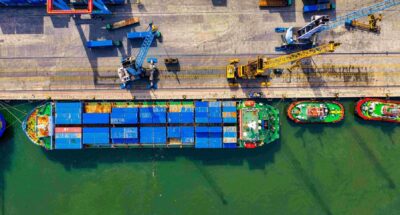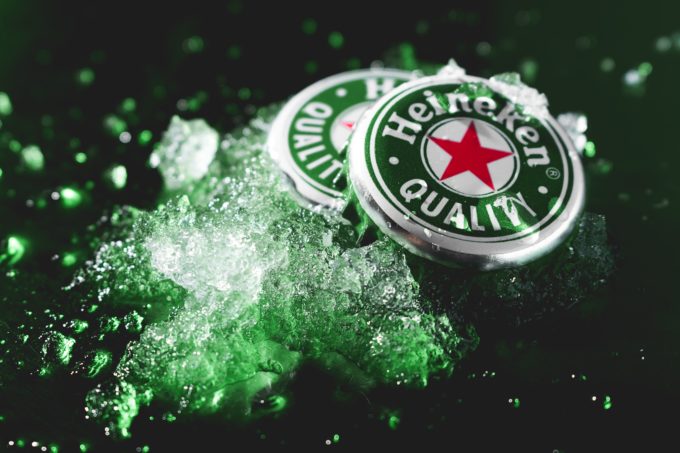
How to harness the power of nonmarket strategy
Forward-thinking leaders proactively shape their external environment, turn uncertainty into certainty, and create substantial value in the process....
Audio available
February 1, 2023 • by Niccolò Pisani in Strategy
Niccolò Pisani, IMD Professor of Strategy and International Business, explores Heineken's ambitious and all-encompassing strategy for sustainable growth, launched amid a global pandemic....
The world’s second-largest beer company can trace its roots back to 1864, when Gerard Adriaan Heineken bought a brewery in Amsterdam. Fast forward to the present day and Heineken now has 75 operating companies, 80,000 employees worldwide, and brands that are active across more than 190 countries.
When former CEO Jean-François van Boxmeer stepped down in February 2020 after 15 years at the helm, his successor expected to be given an opportunity to reset the strategic direction of the company. However, the appointment of Dolf van den Brink as CEO coincided with the height of the pandemic. Rather than exploring exciting new possibilities, then, van den Brink was confronted by the daunting task of steering the company through an unprecedented global crisis.
Moreover, he needed to look beyond recovery efforts and future-proof the business and make it fit to withstand the headwinds of an uncertain post-pandemic future. The new CEO took the bull by the horns: in summer 2020, the company’s leadership team worked extensively with over 200 internal and external stakeholders globally to co-create EverGreen – a multi-year, multi-dimensional plan that would allow Heineken to continue to succeed commercially and grow sustainably in a fast-changing world.
In announcing the strategy, van den Brink explained the name: “We labelled this journey EverGreen, inspired by nature – the resilience, this continuous sense of renewal that you find in nature… It is about finding the right balance between continuity and change….”
It’s not just a growth story or a cost story. It’s both, and more
The development of EverGreen was driven by five strategic priorities that would enable Heineken to deliver long-term value creation. All five would run concurrently and were considered of equal importance. Each was accompanied by far-reaching goals, the achievement of which would future-proof the company, reinforcing its ties to customers and consumers, and reassuring stakeholders that their interests were in safe and responsible hands. Progress in each area would be measured in terms of growth, profitability, capital efficiency, and sustainability and responsibility; moreover, Heineken’s leadership would consider the program successful only if the goals were achieved in all five areas.
These strategic priorities were:
By focusing on the customer, the company realized that it could shape the future. Post-COVID-19, there began a growing consumer trend towards healthier living. To capitalize on this trend, Heineken invested heavily in innovation within the low- and non-alcohol (LONO) category. The company’s LONO portfolio grew by over 10%, while Heineken 0.0 became the world’s top-selling non-alcoholic beer brand. Amstel Ultra, a low-carb and low-calorie extension aimed at health-conscious consumers, sold well in Mexico and was subsequently rolled out to 11 new markets.
During the second year of the pandemic, the company invested in brand-building, using ad campaigns that focused on togetherness, and, as a result, recording its biggest-ever year for sponsorships. To attract Generation Y customers, Heineken innovated with products that embodied values rising to social prominence, such as authenticity, diversity, and connection.
Armed with a fresh level of brand awareness, HEINEKEN was able to move into new geographical markets. It also expanded its portfolio beyond beer, launching alcoholic flavored seltzer water Pure Piraña in Mexico and New Zealand, before expanding into European markets.
Heineken focused on increasing efficiency and productivity through a systematic, company-wide approach. Measures to streamline the organization, rationalize its portfolio, reduce costs, and phase out non-consumer-facing investments resulted in gross cost savings close to €1.3bn ($1.4bn).
Transparency was a priority and a standardized tool was used to pull together the company’s projects and initiatives – over 7,500 across all operating companies. As well as adopting universal standards, sharing knowledge proved fruitful. For instance, in Singapore, the company saved 6% of its entire cost base by implementing 15 initiatives adopted from operating companies in Malaysia, Laos, and Thailand.
In 2009, Heineken launched its Brew a Better World program, focused on raising consciousness of environmental issues, social sustainability, and responsible alcohol consumption. These goals were revisited, and new targets set, including decarbonizing production across the value chain by 2040, and cutting out the use of landfills from all production sites by 2025.
The company also set the target of increasing the proportion of women in senior management positions to 30% (from 25%) by 2025 and 40% by 2030. It mandated that 50% of candidates for any specific role must be women, and successful female candidates would be supported by tailored training and development. Additionally, it committed to equal pay for equal work and has acted to level any differences by 2023. To ensure progress is made on social sustainability, the achievement of such goals is reflected in the long-term incentives and rewards structure of the executive board.
To encourage responsible drinking, and to build on the success of Heineken 0.0, the company has also launched over 130 non-alcoholic product-line extensions. As van den Brink explains: “It’s all about consumers, and different beverage types can fulfil different needs.”
The company decided it wanted to digitize the business, end to end and become the best connected brewer. This entailed investments on both the front- and back-end of its value chain. On the front-end, important efforts were made to digitalise the route to conusmers and enhance the company’s ability to derive insights and foresights from data.
During the pandemic, consumers became accustomed to shopping online; in response, greater investment was made in the company’s direct-to-customer (D2C) platforms, including Beerwulf. In 2021 Beerwulf performed strongly in Europe, mainly owing to enforced additional time at home during lockdowns and the closure of venues selling alcohol; however, in 2022 sales were over 50% higher than pre-pandemic levels, despite the re-opening of bars and restaurants.
The investment in IT proved timely. On the back-end, Heineken focused on using digital to simplify and automate processes, securing a digital backbone throughout all regions, and create a digitally-enabled organization to enhance productivity. Breweries were retrofitted with digital capabilities, allowing staff to connect to brewery equipment remotely, supporting smarter operations. Multiple sites now run connected apps that gather and cross-reference data across sites, with the potential to suggest performance-enhancing improvements. IT operations were also streamlined and rationalized, including consolidation of ERP systems.

EverGreen became a vehicle for Heineken to strengthen company culture and renew commitments to inclusion, diversity, and social sustainability. It launched the “HeiLife” well-being initiative, a platform that allows workers to share successful approaches to achieving work-life balance with their colleagues around the globe.
The business also developed six-month global talent programs for senior managers, including virtual visits to other companies to see how they had adapted to business challenges and compare strengths and capabilities. Any ideas that arise through the program can be pitched to the CEO and executive team and, to help hone leadership skills and ensure a cascade effect, participants teach each section to their teams after completion.
In addition, to ensure there is a gender balance within the local leadership of the company, Heineken tracks turnover and attrition by function, level, country, company tenure, and age. The company also conducts an annual climate survey and three additional pulse surveys per year, in which stress levels are measured.
In the first nine months of 2022, Heineken’s total revenue was up 33.4% on the equivalent period in 2021. In December 2022, it projected mid to high single-digit growth in operating profit despite a more challenging global economic environment, lower consumer confidence, and declining volume sales in Europe. Heineken also expects to exceed its target of €2bn ($2.2bn) in gross savings in 2023, despite higher projected input and energy costs. In the face of continuing uncertainty and challenges, EverGreen is proving that it has been worth the time, money, and investment made in it as a tool for future-proofing the company.
The senior leadership team spent months working with over 200 internal and external stakeholders before launching EverGreen. The importance of gathering insights from all relevant stakeholders in a complex global organization, and ensuring that these were reflected in the strategy eventually decided upon, was paramount.
The change in leadership, coinciding with unprecedented disruption, accelerated the profound transformation of the business and gave added weight to the prioritization of sustainability. Van den Brink recognized that, in crisis, there are always opportunities; while undertaking such an extensive strategy review amid such uncertainty was extremely challenging, he also saw it as a tremendous opportunity to drive change.
Heineken is a profitable global company that has successfully brewed lager beer for over a century. However, it knew that, rather than relying on a legacy reputation, the company needed to maintain momentum and stay ahead of the competition. Van den Brink could see that expansion well beyond Heineken’s core products and flagship brands would be necessary to continue growing.
In an increasingly competitive environment, being diligent on capital utilization and strengthening a cost-conscious culture within the organization is crucial to free the resources to future-proof the business. Heineken has focused on managing this duality by introducing clear targets associated with productivity and at the same time allocating the necessary resources to unlock innovation that will fund the growth going forward.
Heineken has adapted to multiple regional markets, with distinct brands for different regions and localized production. EverGreen sits above regional variations as a centralized, unifying strategy. It connects and aligns leadership within the organization, allowing best practices to be honed and shared across the business. By creating a network of shared knowledge and innovation, the business has made itself more resilient, agile, and adaptive, with digitization giving everyone a more precise and extensive understanding of the business’s potential
Once Heineken’s leadership had decided on the EverGreen strategy, it made a huge effort to communicate it accurately across the organization, providing motivation and ensuring alignment. Top talent pulled together with the executive team to share priorities and reinforce EverGreen as the chosen plan for future-proofing the company. Messages ran across regions, markets, and functions. Given the size of Heineken and the multi-faceted nature of its strategic priorities, strong, clear, and ongoing communication was essential to the success of EverGreen.

IMD Professor of Strategy and International Business
Niccolò Pisani is Professor of Strategy and International Business at IMD. His areas of expertise include strategy design and execution as well as international business, with an emphasis on globalization and sustainability. His award-winning research has appeared in the world’s leading academic journals and extensively covered in the media. His work has been featured in both Harvard Business Review and MIT Sloan Management Review. He has also written several popular case studies that are distributed on a global scale.

June 26, 2025 • by Michael Yaziji in Strategy
Forward-thinking leaders proactively shape their external environment, turn uncertainty into certainty, and create substantial value in the process....
 Audio available
Audio available
June 4, 2025 • by Stéphane J. G. Girod, David Branch in Strategy
The traditional e-commerce model is on its last legs. In a disrupted luxury landscape, brand leaders are shifting focus to unified commerce, hyper-personalization, and deeper digital storytelling to completely reinvent the customer...

June 3, 2025 • by Anna Cajot in Strategy
Donald Trump’s tariff tactics offer a bold case study in game theory in negotiations. By setting the rules early, limiting options, and projecting power through credible threats, his approach shows how negotiations...

May 27, 2025 • by Robert Earle, Karl Schmedders in Strategy
With solar power flooding grids, the duck curve creates both challenges and opportunities for businesses. Learn how smart companies can harness this shift to cut costs and boost efficiency....
Explore first person business intelligence from top minds curated for a global executive audience